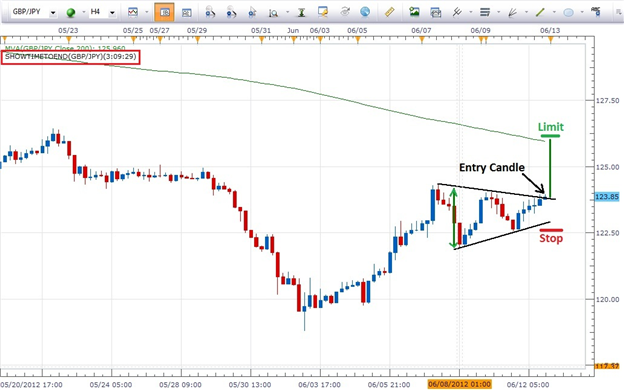Triangle patterns form when price action oscillates between support and resistance and consolidates in the process.
On the 4 hour chart of the GBPJPY below you can see how price begins to tighten or “coil up” between support, the lower black line, and resistance, the upper black line. As with anything that keeps on being compressed over time, an ultimate breakout will take place.
 Entry Signal:
Entry Signal:The candle labeled “entry candle” is currently just above our triangle resistance line. If this candle closes above that resistance line, that will be our entry signal. (If it does not, we will continue to bide our time for either a bullish or bearish breakout from the pattern.)
Stop Placement:If the entry candle does in fact close above our resistance line, we could enter the trade long with a stop just below the support line in the area labeled “stop” in red. In the case of a downside breakout the stop would be placed above our resistance line.
Limit Placement:When you look at the far left side of the triangle where the pattern begins, you will see a green line with arrowheads at either end. In the case of any triangle pattern, that distance can be used to roughly determine the distance that price will travel after the breakout occurs.
The green line just to the right of the entry candle is the same length as the one discussed above. In the case of a bullish breakout we would place that line (or simply determine the number of pips it encompasses) as we see it on the chart and set our limit around the top of that line. (We could set our limit just below the top of the limit line to increase the likelihood that our limit would be triggered.)
In the case of a bearish breakout, we would reverse the above process and place the line below support at the point of the breakout.